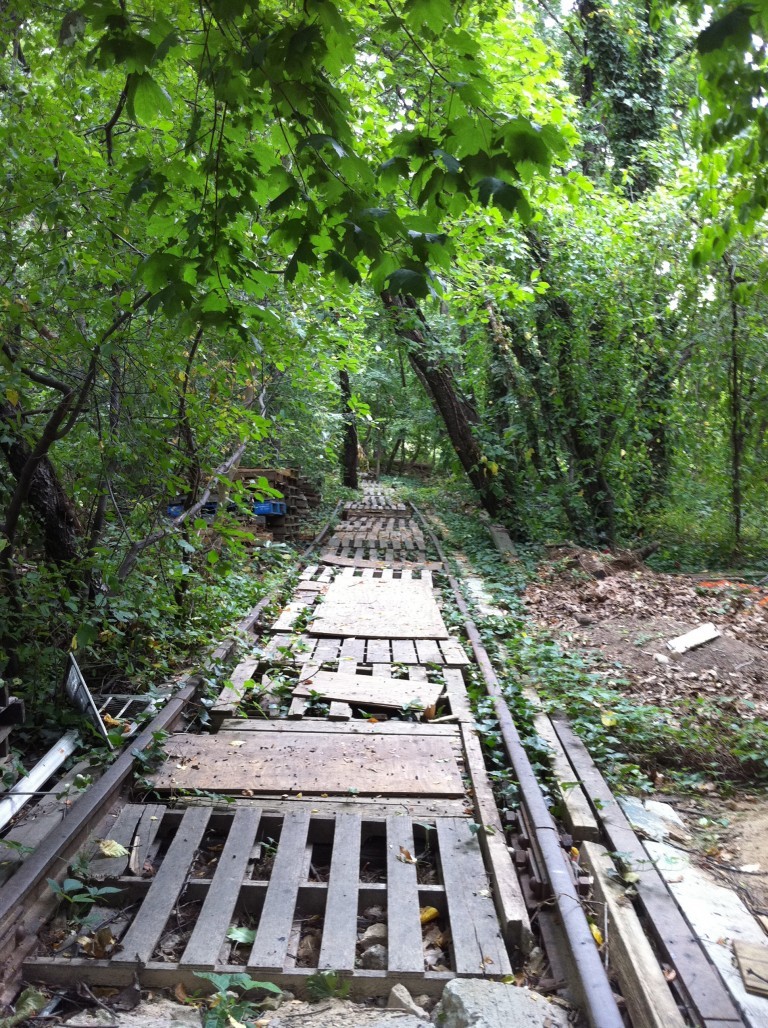PHOTO: Assemblyman Phil Goldfeder this week called on the MTA to fund a new Rockaway Beach Rail Line study with a $17 million state grant. File Photo
An area elected official who for years has been advocating for the rehabilitation of the long-abandoned Rockaway Beach Rail Line called on the Metropolitan Transportation Authority this week to apply for capital from a recently-announced state Department of Transportation infrastructure grant to fund a comprehensive feasibility study into reactivation of the rail spur.
In a letter written to MTA Chairman Thomas Prendergast, Assemblyman Phil Goldfeder (D-Howard Beach) urged the agency to apply for the 2015 Passenger and Freight Rail Assistance Program grant to fund the feasibility study into reactivating the RBRL. According to the program’s application guidelines, the state is making up to $10 million dollars in funding available for passenger rail projects. These grants, Goldfeder noted in his letter, may go towards the costs of preparing design and plan specifications for the rehabilitation of tracks, as well as fund cost estimates and environmental impact studies.
“Families in southern Queens and Rockaway suffer from some of the longest commutes in the entire city. The state’s new passenger rail grant program has the potential to bring an end to our transportation desert,” Goldfeder said. “By funding a feasibility study into reactivating the Rockaway Beach Rail Line, we can work to create a true north-south rail corridor in Queens, improve transit access to our airports, and take thousands of cars off the road.”
The program announced earlier this month commits $17 million to critical improvements at rail and port facilities across the Empire State. According to NYSDOT, projects will be selected based on the ability to address areas of economic development and sustainability, how well they support the broad initiatives of the State Rail Plan, and the overall public benefit relative to project costs. The application process is open to railroad operators, industrial development agencies, and state and local government agencies and authorities. The deadline to submit applications is Aug. 27.
The line was put into service in the late 19th Century under the control of the Long Island Rail Road. According to Goldfeder’s office, it provided area residents with expedient access to other parts of the city and 40-minute commutes to midtown Manhattan from Rockaway. In the early 1960s, parts of the railroad service were condensed, sectioned off and eventually closed. In the following years, communities surrounding the line have seen dramatic increases in population, with the Rockaway Peninsula populace nearly doubling.
Last November, Goldfeder touted a Queens College study that indicated that the defunct rail line could generate half a million subway rides per day, and many residents in the communities through which the line runs favor reactivation over transforming it into a park similar to the High Line in Manhattan.
The student-led Department of Urban Studies analysis, “A Community Impact Study of Proposed Uses of the Rockaway Beach Branch Right of Way,” surveyed thousands of residents and researched available census data to gauge the transportation and park needs of Rego Park, Forest Hills, Glendale, Richmond Hill, Woodhaven, and Ozone Park—the neighborhoods surrounding the abandoned line.
In October, Friends of the QueensWay and the Trust for Public Land released the QueensWay Plan, a project that involves converting the RBRL into a 3.5-mile, $120 million public park boasting trails and amenities.
“Multiple studies by the Metropolitan Transportation Authority and the Port Authority have shown that rail is not a viable option because of the extraordinary cost of building it, the significant increase in cost to commuters to use it, and the environmental and quality of life damage and disruption it would cause to the existing regional rail system,” said Friends of the QueensWay’s Travis Terry.
Reactivation of the rail line would cost anywhere from $700 to $900 million.
By Michael V. Cusenza
michael@theforumnewsgroup.com

